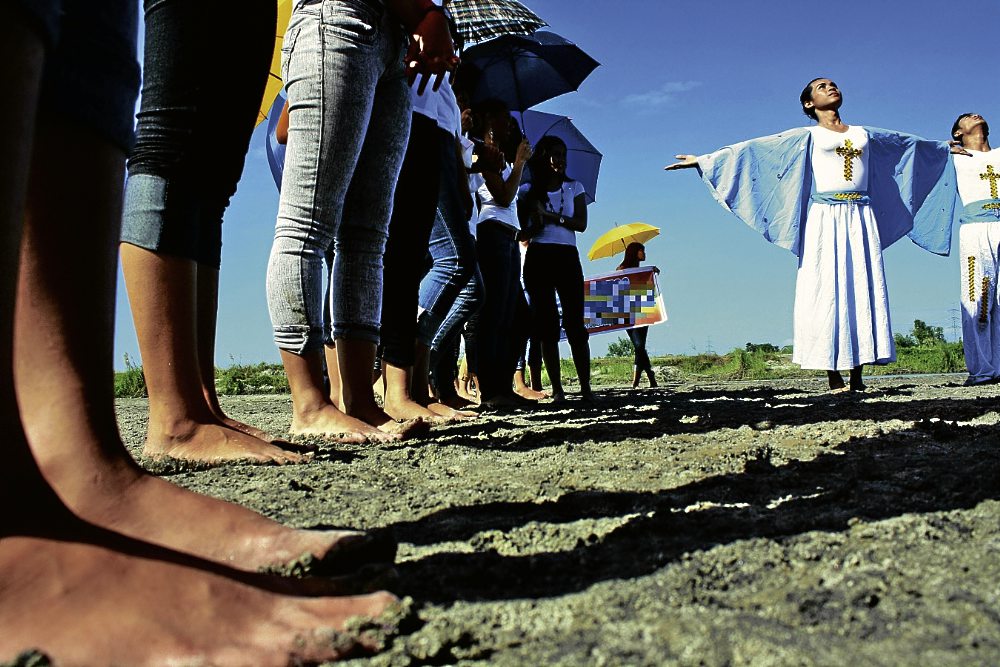
IN A FESTIVAL rooted in how Mt. Pinatubo’s lahar destroyed communities from 1991 to 1997, residents of Bacolor, Pampanga, celebrate “Makatapak” (a local term for going barefoot). E.I. REYMOND T. OREJAS/INQUIRER CENTRAL LUZON
BACOLOR, Pampanga—Lahar is not all about tragedy.
In this former capital of the Philippines, it is also about victory against nature’s fury, mainly the 1991 eruptions of Mt. Pinatubo and the onslaught of volcanic sediments that entombed the town in a sandy grave that went as deep as 20 meters until 1997.
Celebrating this victory over disaster is a festival called “Makatapak,” a native term for going barefoot.
“When people recount their experiences about lahar, they said they had to remove their slippers to walk firmly on the soft, hot mud to reach safer grounds,” said Fr. Jesus Manabat, this town’s parish priest.
“Rich or poor, they all had to walk barefoot. They were back to being equal. And they were humbled,” said Manabat at the launch of the 5th year of the festival that he initiated.
After the Oct. 1, 1995, lahar onslaught that buried the village of Cabalantian, residents walked barefoot, holding the rope securing an image of the Our Lady of the Holy Rosary (Virgen La Naval).
They wept and poured out their grief until the procession entered the half-buried San Guillermo Church, Manabat recalled, citing a story by the late Fr. Nestor Tayag, the former parish priest of the town.
Now, Cabalantian is a robust farming village, with many concrete houses and open kitchens for friends and visitors.
Makatapak is another occasion for Bacolor folk, scattered in 16 resettlements, to return home. Couple Palermo and Josie Malang never miss the festival because, they said, it was their story, too.
“We were really without slippers because that’s the only way you can walk on lahar,” said Josie.
“But as you walk, you have to call on God,” she said.